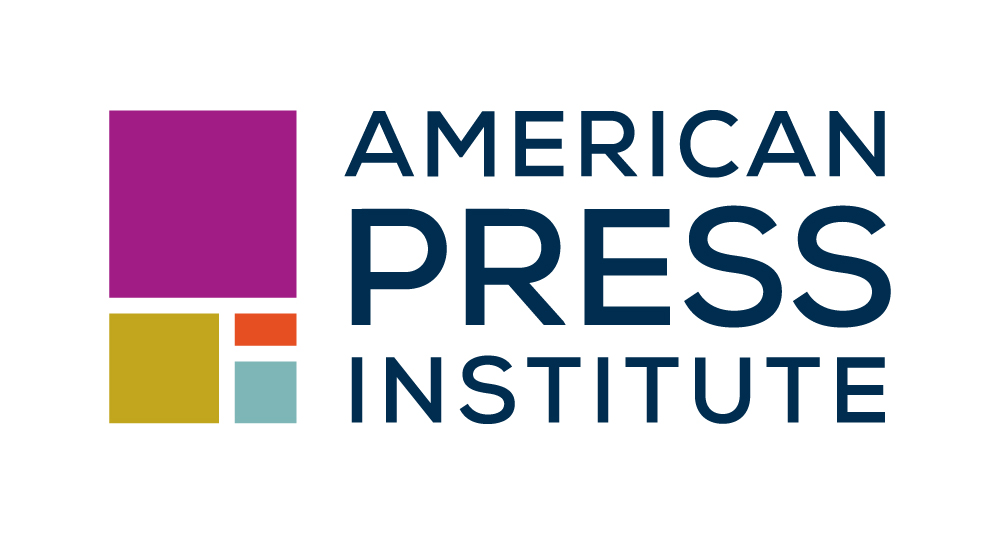How can we make meetings more engaging and equitable?
News leaders at seven news organizations and API’s Table Stakes team asked ourselves this question last year. We met weekly for a four-part bootcamp led by the National Equity Project centered on “Designing and Facilitating Meetings for Equity,” which outlined strategies to support teams through difficulties and differences in the workplace.
During the training, Allison Shirk joined her colleagues at the Chattanooga Times Free Press with the goal of rethinking staff meetings. As the director of digital content and engagement strategy at WEHCO Media, she also supports the company’s daily newsrooms in Arkansas and Missouri.
After working through the pandemic years, feedback from staff showed that the standard round-robin cycle on Zoom meetings — when news leads took turns sharing updates — needed to change. Shortly after the bootcamp, Shirk revamped a monthly audience meeting attended by digital news staff across nine daily newspapers. The meeting still includes the standard analytics reviews but now features different discussions presented by digital teams across WEHCO.
“Everybody wasn’t getting an equal amount of time to share ideas and ask questions,” she said. “And so I just felt like this leveled the playing field a little bit and gave as much time and respect to our smaller newsrooms as well as our larger newsrooms.”
Attendees for the monthly meeting range from a two-person newsroom in Camden, Ark., to a 100-person newsroom in Little Rock. Since making the changes, Shirk said, “it feels like we’re talking with each other and not at each other.”
Use agendas and activities to your advantage
WEHCO’s new meeting format was built from an agenda planning tool developed by NEP based on the experiential learning cycle. The four stages break down ways adults connect with information and what kind of activities can support their learning:
- Affective: Tapping into emotions to help everyone feel present and connected
- Reflecting with a partner
- Quick check-ins like an icebreaker question
- Imaginal: Brings out hopes, imagination and creativity
- Brainstorming
- Sharing evocative quotes, imagery or metaphors
- Conceptual: Reflects on ideas and strategies
- Analyses and surveys
- Finding new ways to present information
- Practical: Supports shared learning with a defined task, ideally with a deliverable
- Goal-setting
- Developing a lesson or presentation to show and teach colleagues
At its core, the monthly digital meeting still features digital analytics reports about which stories and sections performed well with readers. However, Shirk now structures the one-hour meeting to include all the experiential learning stages. And the activities can change from month to month.
Attendees help shape the calls by volunteering to prepare a short presentation for the meeting or giving feedback in a survey after the call. Since June, the monthly digital meetings have introduced a range of topics, including newsrooms sharing tips on how they manage Instagram Reels and social media content moderation strategies and a walk-through of training resources for early-career reporters.
Erik Fermín, NEP’s senior equity leadership consultant, explained how the activities can be effective in boosting participation and developing a sense of shared ownership within a group.
“Meetings that are designed and facilitated with a whole person approach create a dynamic and engaging environment where participants feel genuinely involved rather than being passive recipients of information,” he said. “When participants feel heard and valued by their colleagues, psychological safety increases and people are more willing to contribute meaningfully to discussions and shared work.”
Fermín said incorporating a variety of activities across the cycle maintains energy and engagement while ensuring that the meeting is both meaningful and practical.
Try it out now
- Ask yourself which meetings could benefit from change: News organizations can take the opportunity to rethink all kinds of meetings, from planning larger projects — like investigations or product launches — to check-in meetings.
- Identify desired outcomes: Picture an upcoming meeting on your calendar and consider what you’d like to get out of it. The practical and experiential outcomes framework can manage your time and expectations. It involves naming the objectives you want to accomplish together and differentiating them from how you want people to feel about the work. In newsrooms:
-
-
- Practical outcomes can include deciding on deadlines, identifying roadblocks or practicing using a new tool.
- Experiential outcomes can include making genuine connections with colleagues or giving space to share thoughts and hear perspectives.
-
- Offer new ways to learn: Here are ideas for applying the experiential learning stages and activities in your team meetings.
-
- Affective:
-
-
- After a project airs or publishes, take turns sharing short reflections in pairs, triads or with the whole group.
- Ask people to react to a photo or quote from a news story that’s being discussed.
-
-
- Imaginal:
-
-
- Use visuals (like a sticky note activity) to surface ideas and angles for story pitches.
- Share your hopes for a project and describe the future impact you want your work to have
-
-
- Conceptual:
-
-
- Share analytics, data and graphics of how a story/project is performing.
- Host a listening session or small group edits and use a form of constructivist listening for feedback.
-
-
- Practical:
-
-
- Decide how the group plans to measure success toward a shared goal.
- Share lessons, takeaways and resources with colleagues after a professional development opportunity.
-
The National Equity Project conducts open registration trainings and hosts an online learning platform for self-paced leadership development, which includes the “Designing and Facilitating Meetings for Equity” curriculum highlighted in this series.
Share with your network
- Leading teams with equity
- Be a host leader, not a hero
- Stages of team development
- Navigate needs by listening
- Make your meetings more engaging


